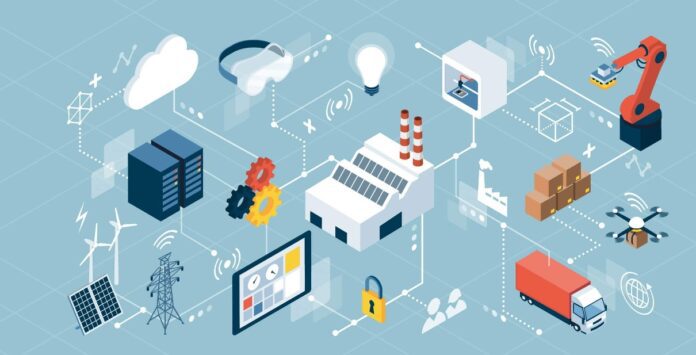Automation in manufacturing has evolved significantly over the past few decades, driven by advances in technology and the quest for increased efficiency and productivity. Currently, the industry stands at a crossroads, integrating advanced automation technologies while looking ahead to a future where even more sophisticated systems will dominate.
The Current State of Automation in Manufacturing
Today, automation in manufacturing encompasses a wide range of technologies, from traditional mechanization to advanced robotics and artificial intelligence (AI). The industry widely uses Computer Numerical Control (CNC) machines, programmable logic controllers (PLCs), and industrial robots. These technologies have enhanced precision, consistency, and speed in manufacturing processes.
- Industrial Robotics: Modern manufacturing heavily relies on industrial robots for tasks such as welding, painting, assembly, and material handling, with specialist companies like CJS Automation providing a wide range of parts. These robots offer high precision and can operate continuously, significantly boosting productivity and reducing costs.
- AI and Machine Learning: AI and ML have begun to play a crucial role in predictive maintenance, quality control, and supply chain optimization. AI algorithms analyze vast amounts of data from sensors and other sources to predict equipment failures before they occur, ensuring minimal downtime. Additionally, machine learning models improve quality control by detecting defects that may not be visible to the human eye.
- IoT and Smart Manufacturing: The Internet of Things (IoT) connects machines, systems, and sensors, enabling real-time monitoring and data collection. This connectivity facilitates smart manufacturing, where data-driven insights optimize production processes, enhance resource management, and improve decision-making.
- Collaborative Robots (Cobots): Cobots work alongside human workers, enhancing flexibility and efficiency on the factory floor. These robots can perform repetitive or hazardous tasks, allowing human workers to focus on more complex and value-added activities.
- Additive Manufacturing (3D Printing): Additive manufacturing is transforming production by allowing the creation of intricate and customized parts with minimal waste. This technology is especially beneficial for prototyping and small-batch manufacturing.
The Future of Automation in Manufacturing
Looking ahead, the future of manufacturing automation promises even more transformative changes, driven by advances in AI, robotics, and digital technologies. Here’s what the future might hold:
- Hyper-Automation: The future will see a trend towards hyper-automation, where virtually all aspects of manufacturing are automated. This involves integrating advanced AI, robotics, IoT, and other technologies to create fully autonomous production lines capable of self-monitoring, self-correcting, and self-optimizing.
- AI-Driven Innovations: AI will continue to advance, offering more sophisticated capabilities such as autonomous decision-making and advanced predictive analytics. AI systems will not only predict maintenance needs but also autonomously adjust production schedules and processes to maximize efficiency and minimize waste.
- Enhanced Human-Robot Collaboration: Future manufacturing will feature even more advanced cobots with improved safety, flexibility, and intelligence. These cobots will work seamlessly alongside human workers, learning and adapting to human behaviors and preferences to enhance productivity and job satisfaction.
- Digital Twins: The concept of digital twins—virtual replicas of physical systems—will become more prevalent. Digital twins will allow manufacturers to simulate, analyze, and optimize production processes in a virtual environment before implementing changes in the real world, reducing risks and improving outcomes.
- Advanced Additive Manufacturing: The capabilities of 3D printing will expand, allowing for the production of larger, more complex, and multi-material components. This will enable greater customization and innovation in product design and manufacturing.
- Sustainable Manufacturing: Automation will play a critical role in achieving sustainability goals. Advanced technologies will optimize energy use, reduce waste, and enable the circular economy by facilitating recycling and reuse of materials. Manufacturing technologies like pipe fabrication software can help reduce waste by bundling work orders and saving unused pipe length in the system for future use.
- Cyber-Physical Systems and Industry 5.0: The integration of cyber-physical systems will deepen, creating highly interconnected and intelligent manufacturing ecosystems. Industry 5.0 will focus on human-centric automation, where human creativity and technology collaborate to drive innovation and efficiency.
Conclusion
Automation in manufacturing is currently at a highly advanced stage, characterized by the widespread use of robotics, AI, and IoT. The future promises even greater advancements, with hyper-automation, AI-driven innovations, enhanced human-robot collaboration, digital twins, advanced additive manufacturing, sustainable practices, and the advent of Industry 5.0 shaping the next era of manufacturing. These developments will not only increase efficiency and productivity but also create more resilient, adaptable, and sustainable manufacturing systems.

